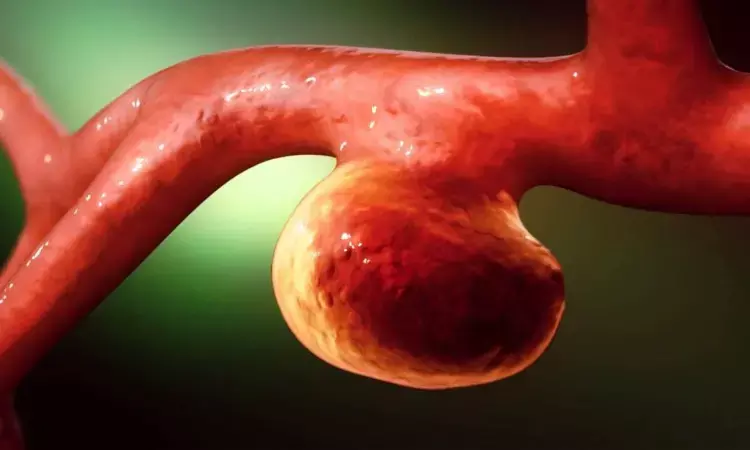- Home
- Medical news & Guidelines
- Anesthesiology
- Cardiology and CTVS
- Critical Care
- Dentistry
- Dermatology
- Diabetes and Endocrinology
- ENT
- Gastroenterology
- Medicine
- Nephrology
- Neurology
- Obstretics-Gynaecology
- Oncology
- Ophthalmology
- Orthopaedics
- Pediatrics-Neonatology
- Psychiatry
- Pulmonology
- Radiology
- Surgery
- Urology
- Laboratory Medicine
- Diet
- Nursing
- Paramedical
- Physiotherapy
- Health news
- Fact Check
- Bone Health Fact Check
- Brain Health Fact Check
- Cancer Related Fact Check
- Child Care Fact Check
- Dental and oral health fact check
- Diabetes and metabolic health fact check
- Diet and Nutrition Fact Check
- Eye and ENT Care Fact Check
- Fitness fact check
- Gut health fact check
- Heart health fact check
- Kidney health fact check
- Medical education fact check
- Men's health fact check
- Respiratory fact check
- Skin and hair care fact check
- Vaccine and Immunization fact check
- Women's health fact check
- AYUSH
- State News
- Andaman and Nicobar Islands
- Andhra Pradesh
- Arunachal Pradesh
- Assam
- Bihar
- Chandigarh
- Chattisgarh
- Dadra and Nagar Haveli
- Daman and Diu
- Delhi
- Goa
- Gujarat
- Haryana
- Himachal Pradesh
- Jammu & Kashmir
- Jharkhand
- Karnataka
- Kerala
- Ladakh
- Lakshadweep
- Madhya Pradesh
- Maharashtra
- Manipur
- Meghalaya
- Mizoram
- Nagaland
- Odisha
- Puducherry
- Punjab
- Rajasthan
- Sikkim
- Tamil Nadu
- Telangana
- Tripura
- Uttar Pradesh
- Uttrakhand
- West Bengal
- Medical Education
- Industry
Lumbar Drainage in patients of Aneurysmal Subaarachnoid Hemorrhage improves Outcomes : EARLYDRAIN Trial

Recent research from Germany form the EARLYDRAIN trial, published in JAMA Neurology suggests that lumbar CSF drainage in patients of aneurysmal subarachnoid hemorrhage may improve overall outcomes in survivors.
Subarachnoid hemorrhage resulting from a ruptured intracranial aneurysm is a life-threatening event, often leading to death or irreversible disability. Historically, the presence of blood in the basal cisterns, which causes cerebral vasospasm, has been linked to the resultant delayed cerebral ischemia in these patients. While vasospasm is seen in about 70% of subarachnoid hemorrhage cases, up to 40% experience a secondary infarction, with some showing no signs of vasospasm. Traditional treatments aimed at addressing vasospasm have proven ineffective in enhancing mortality or functional outcomes.
The EARLYDRAIN trial has brought to light the potential benefits of lumbar drainage in these patients. As per this study, using a lumbar drain alongside standard care significantly reduced the instances of infarctions at discharge and decreased the unfavorable outcome rates at the six-month mark. Interestingly, the amount of cerebrospinal fluid (CSF) drained in the initial week post-onset was comparable in both the lumbar drain and standard of care groups.
One remarkable observation was the color disparity in the fluid from a ventricular vs. a lumbar drain. This is attributed to the sedimentation of erythrocytes in the CSF, making lumbar drainage more efficient than ventricular drainage.
Moreover, patients who underwent lumbar drainage demonstrated significantly lower intracranial pressures (ICP). High ICP is common in subarachnoid hemorrhage patients, with about 80% showcasing ICP elevation beyond 20 mm Hg. Prolonged and heightened ICP is directly correlated with unfavorable outcomes, with spikes potentially leading to spreading depolarizations, preluding infarctions. This trial's data suggests lumbar drains are superior in controlling ICP compared to other methods.
The rate of infections in the EARLYDRAIN trial is representative of a typical mixed-grade aneurysmal subarachnoid hemorrhage demographic. Over half of these patients develop fever, with about 20% progressing to pneumonia. Although device-associated meningitis was included in the infection definition, frequent CSF analyses, which could instigate infections, were not a standard procedure. Moreover, current diagnostics seem insufficient in pinpointing device-associated infections.
Infarct detection mainly utilized CT scans, even though MRI might offer better sensitivity. The EARLYDRAIN trial didn't adopt the latest definition of delayed cerebral ischemia. Instead, it focused on clinician-judged neurological worsening and imaging methods independently. Notably, the observed infarction rate was higher compared to other studies, potentially due to the inclusion of patients with poor grades in the EARLYDRAIN trial.
In summary, while the relationship between vasospasm and delayed cerebral ischemia remains complex, the EARLYDRAIN trial points towards the efficacy of lumbar drainage in improving outcomes and managing intracranial pressures for patients suffering from aneurysmal subarachnoid hemorrhage. Further studies are essential to delve deeper into the intricacies of the disease and refine treatment strategies.
Reference:
Wolf S, Mielke D, Barner C, et al. Effectiveness of Lumbar Cerebrospinal Fluid Drain Among Patients With Aneurysmal Subarachnoid Hemorrhage: A Randomized Clinical Trial. JAMA Neurol. 2023;80(8):833–842.
doi:10.1001/jamaneurol.2023.1792
MBBS, DrNB Neurosurgery
Krishna Shah, MBBS, DrNB Neurosurgery. She did her MBBS from GMC, Jamnagar, and there after did direct 6 Year DrNB Neurosurgery from Sir Ganga Ram Hospital, Delhi. Her interests lie in Brain and Spine surgery, Neurological disorders, minimally invasive surgeries, Endoscopic brain and spine procedures, as well as research.
Dr Kamal Kant Kohli-MBBS, DTCD- a chest specialist with more than 30 years of practice and a flair for writing clinical articles, Dr Kamal Kant Kohli joined Medical Dialogues as a Chief Editor of Medical News. Besides writing articles, as an editor, he proofreads and verifies all the medical content published on Medical Dialogues including those coming from journals, studies,medical conferences,guidelines etc. Email: drkohli@medicaldialogues.in. Contact no. 011-43720751


